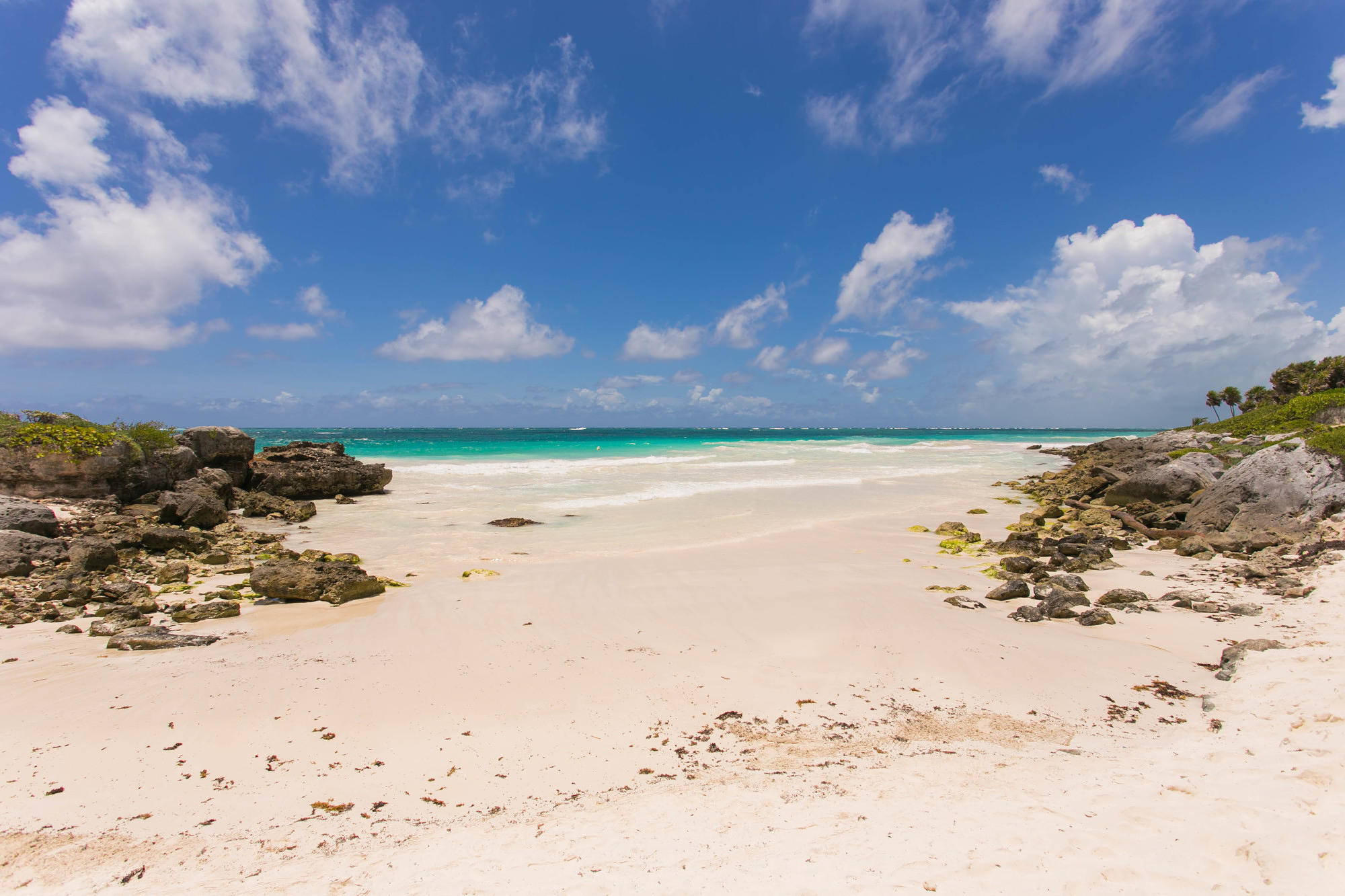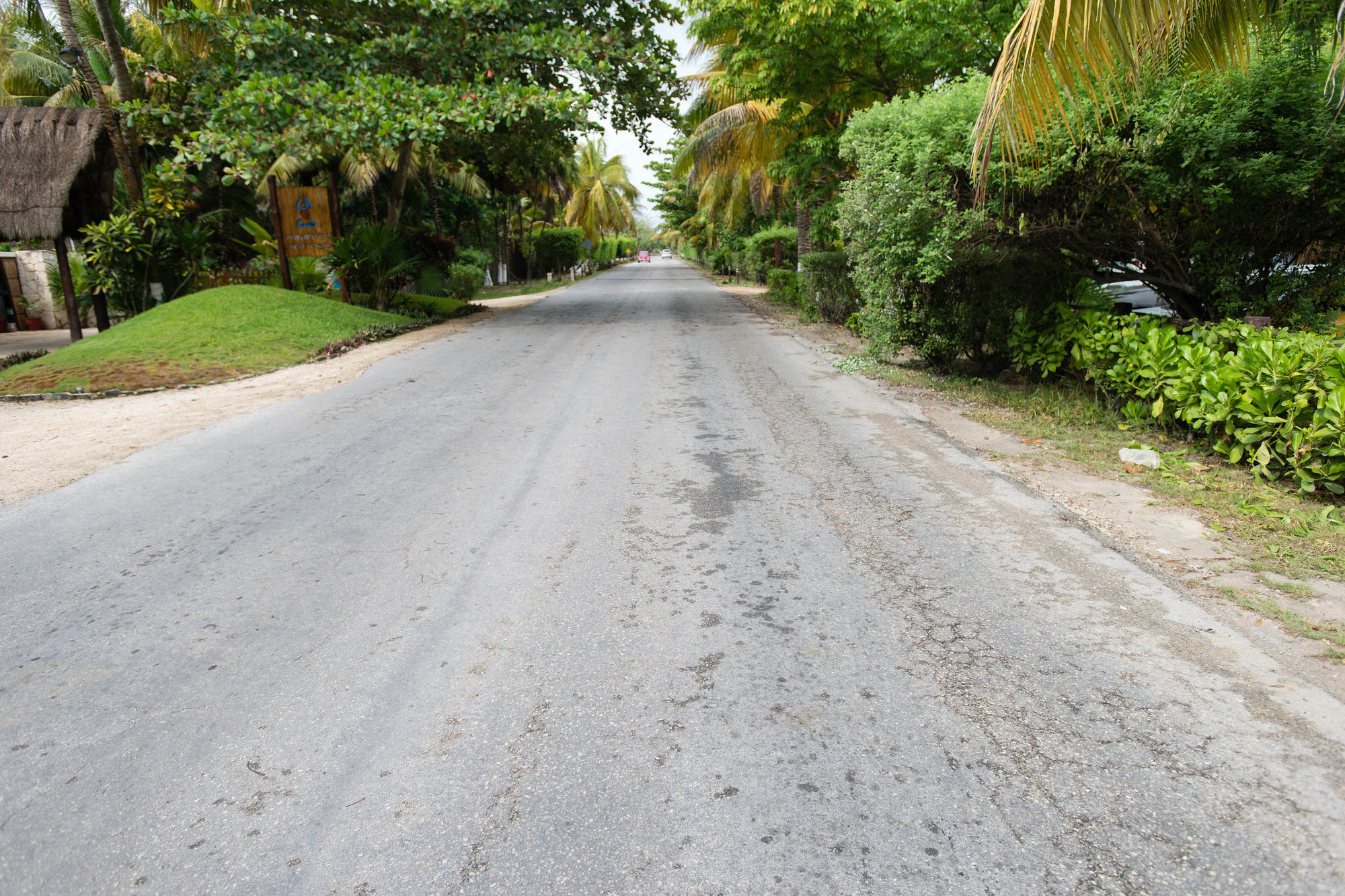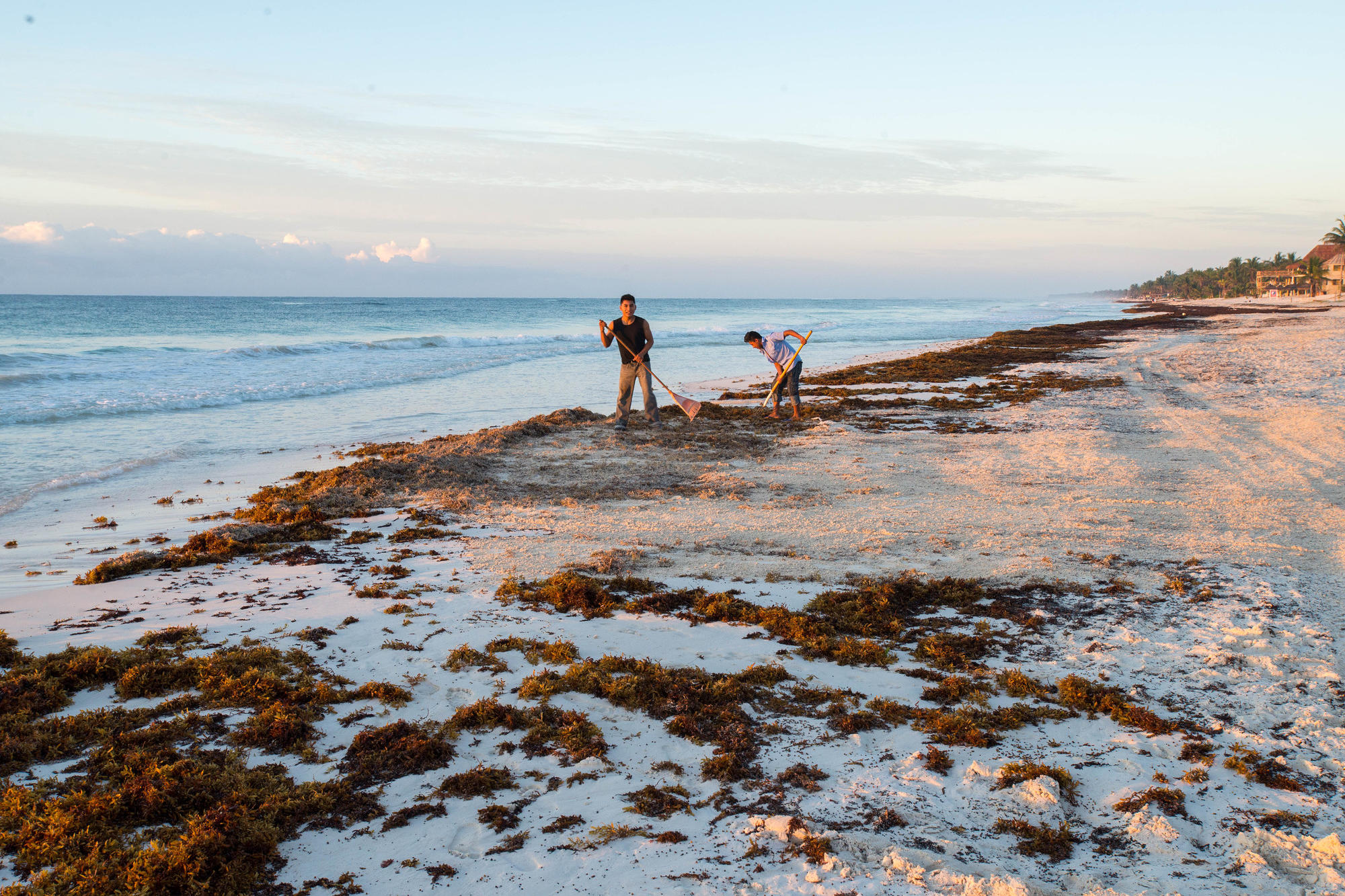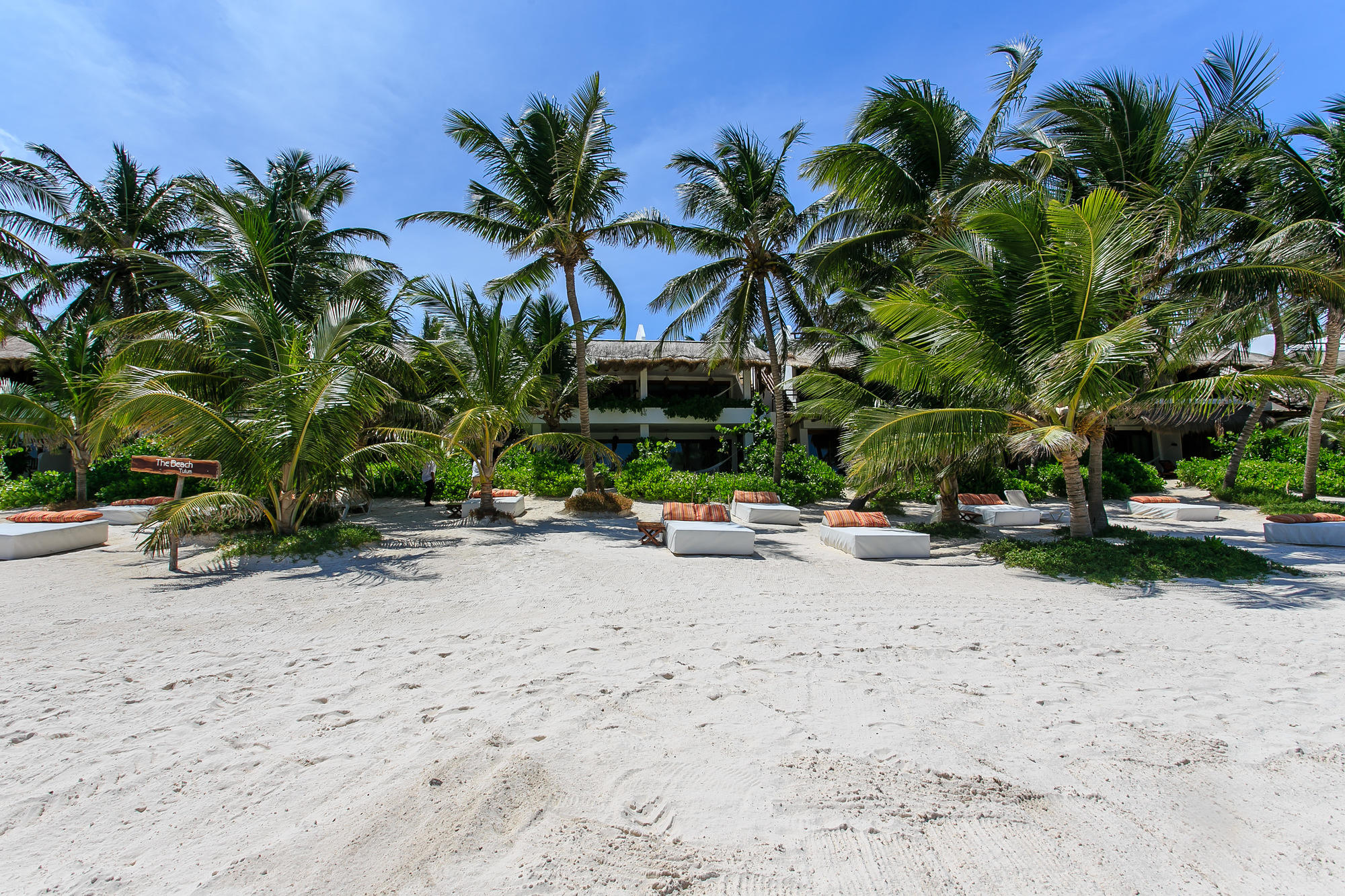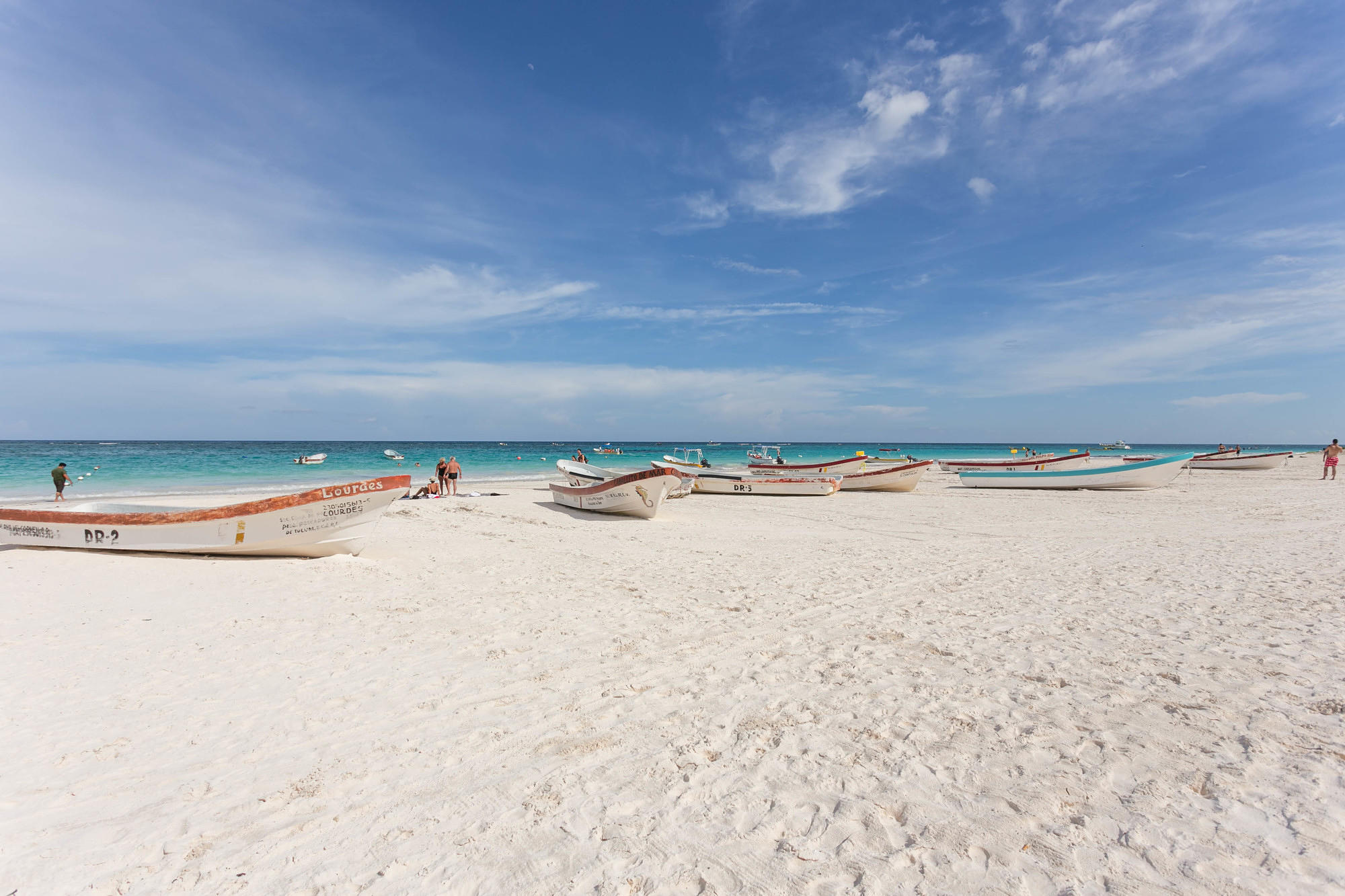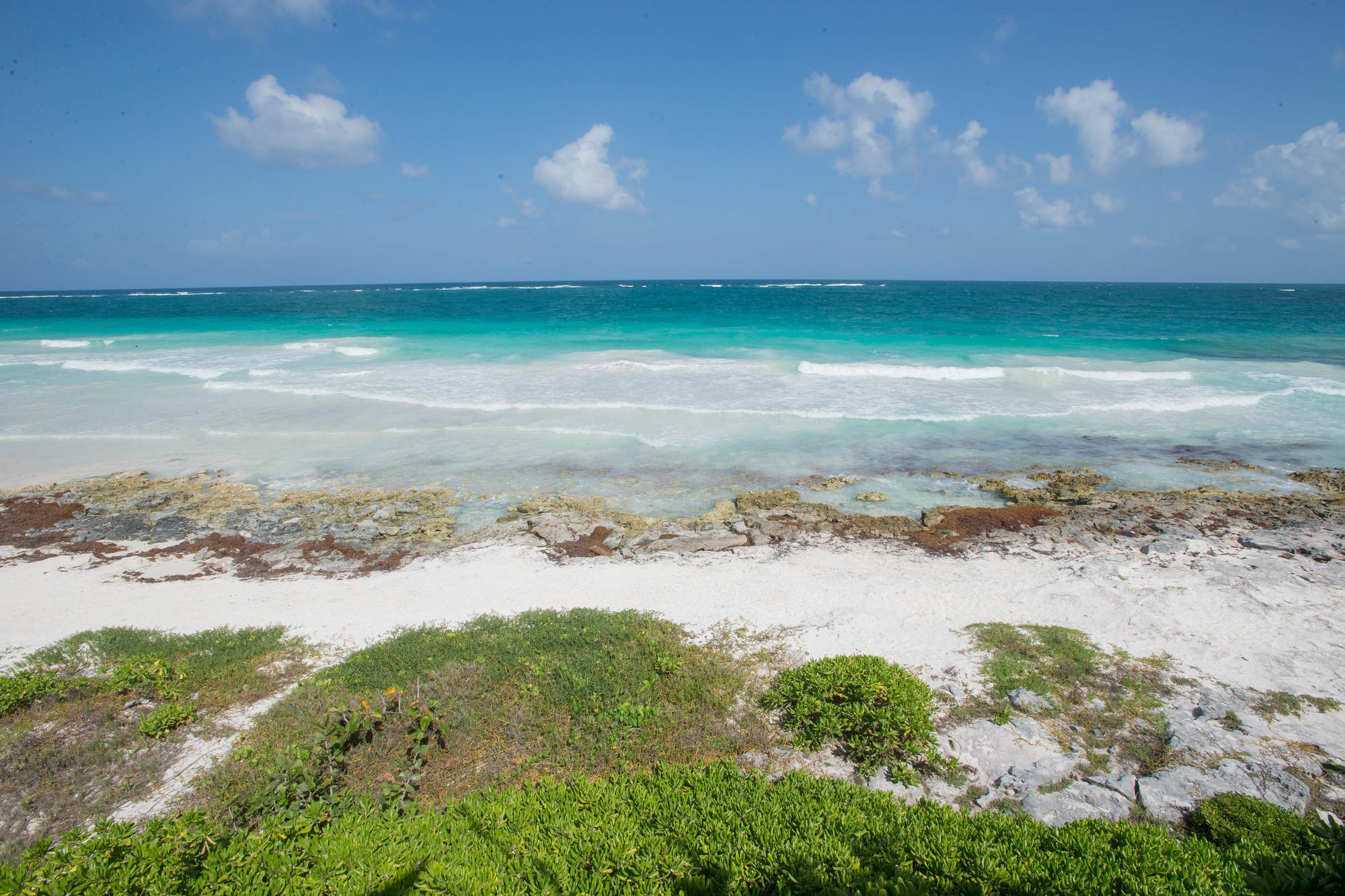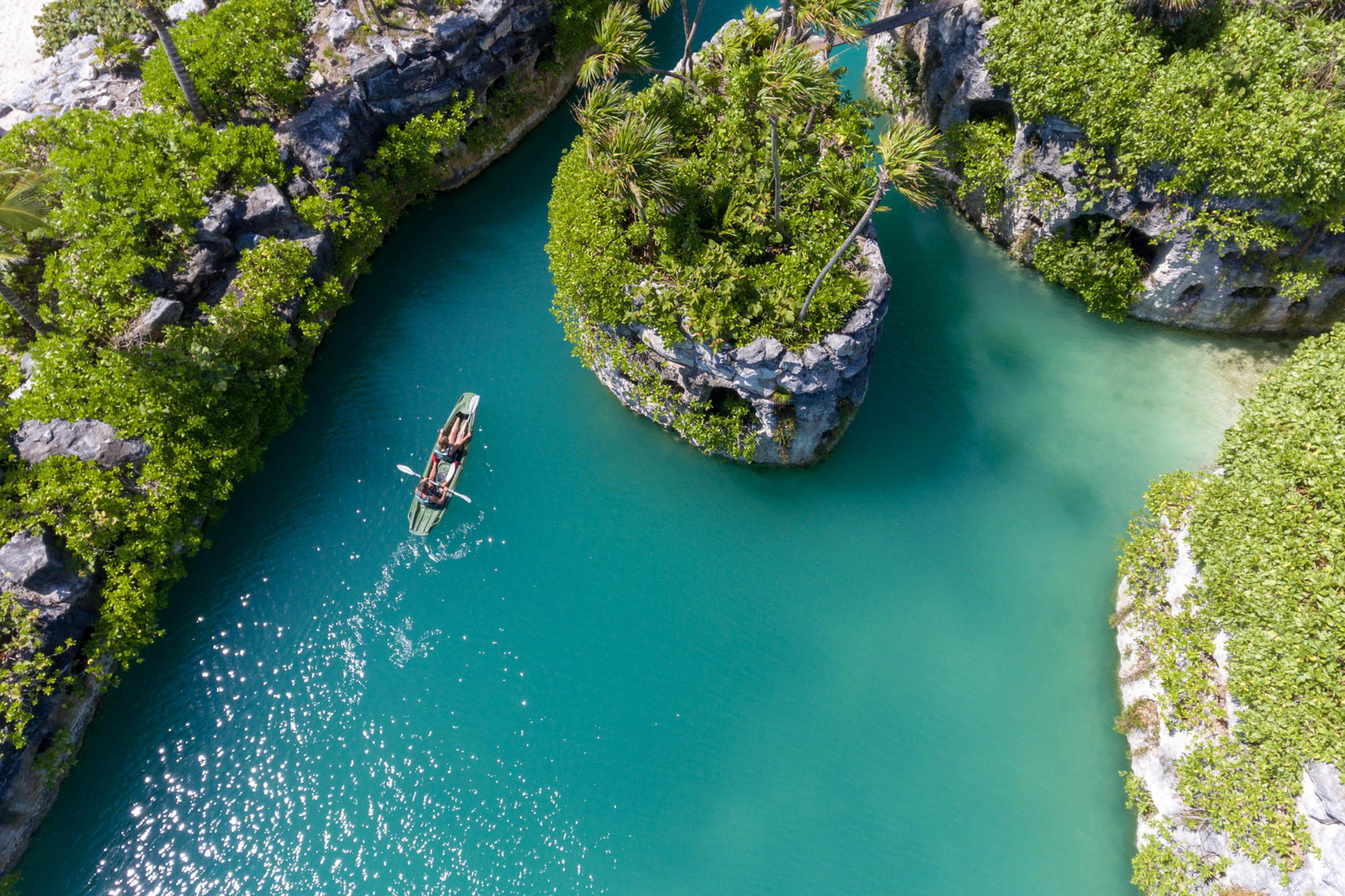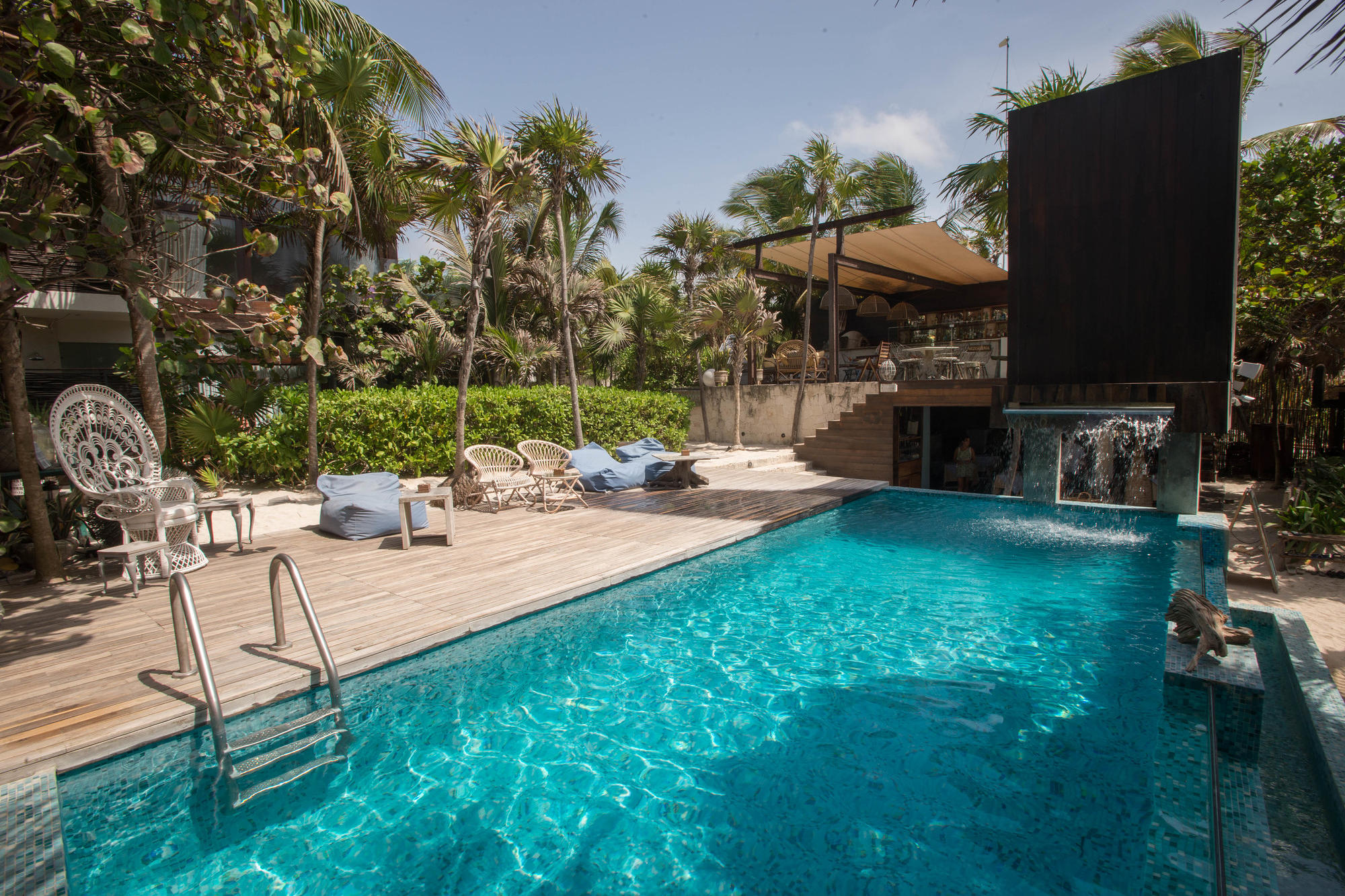In case you haven't noticed, Tulum has been having a moment. The bohemian vibe, picturesque beachside ruins, and lively-but-still-local town experience attract travelers from near and far and give tourists a solid reason to venture beyond the tried-and-true staples of Cancun and Playa del Carmen. Though the once-sleepy town has gone through a quick touristic transformation, welcoming travelers has always been a part of Tulum’s history. Back in the 13th century, the Mayans built Tulum as a welcoming port city for travelers and traders heading inland. It prospered for nearly 200 years, but was eventually abandoned after much of the population died from foreign diseases brought over by 16th-century Spanish conquistadors.
Today, Tulum’s ruins are some of the best-preserved Mayan ruins in the area. The modern-day town of Tulum lies just south of the original site, and is home to a large expat scene, mix of boutiques and local spots, and a very Western wellness vibe on the beach. If you’re planning a trip to Tulum, here’s what you’ll need to know before heading down.
1. Getting to Tulum from Cancun International Airport takes less than two hours.
Tulum is located in the Riviera Maya, just 72 miles from Cancun International Airport. From here, it’s around a 90-minute drive south on Highway 307 or a two-hour direct bus journey. Taking the public ADO bus is easy and affordable. Buses leave from the airport with a few direct departures per day. Otherwise, you can catch a bus to Playa del Carmen and change at the station there. Note: We don’t recommend self-driving this road at night, as it’s poorly lit and difficult to spot the occasional person running across. For savvy budget travelers, grabbing a collectivo (a local shared ride van) is the most affordable and local way to get to Tulum, though timetables aren’t reliable and random stops along the route make for a longer journey.
2. Tulum is not the quaint (or affordable) town it once was.
This once-sleepy village was initially beloved by backpackers and beach bohemians for its quaint and local feel, dirt roads, and beautiful, mostly barren beaches. Word spread like wildfire, though, causing a tourism and development boom. In less than 10 years, prices have skyrocketed, stores started catering mostly to tourists, roads have been paved, and streets buzz year-round with locals and travelers alike. If you’re looking for that sleepy, undiscovered town vibe, this is no longer it. However, it is still less commercial, safer, and more artsy than longtime hot spots like Cancun and Playa del Carmen.
3. Tulum is easy to navigate, but parking is a hassle.
Tulum has three main roads (plus a grid of one-way side streets running through the town), making it very easy to navigate. The continuation of Highway 307 turns into the town’s main drag. Another road runs along the beach from the back entrance of the ruins, past all the beach hotels and boutiques, and leads to an entrance to the Sian Ka’an Biosphere Reserve. The third connects these two thoroughfares. Meanwhile, parking in Tulum is a huge pain. Parking along the beach road is very limited and lots are usually reserved for hotel guests only. In town, spaces are first-come, first-served.
4. Most tourists in Tulum just rent bikes, walk, and/or take cabs.
Most tourists tend to rent a bike as their main mode of transportation in Tulum, plus bicycle parking is easy to find and invent (just loop the lock around a thin palm tree!). However, Tulum is also a very walkable city and you can get from end to end in about 30 minutes on foot, though it can feel like an eternity in the hotter months. From the closest, most northern part of town, it’s about a 45-minute walk to the Tulum ruins. The beginning of the beachfront road is also around a 45-minute walk from town — if you’re near the edge of town, close to the connector road. This walk is long, hot, and not recommended (bike or take a cab instead). Taxis in Tulum are everywhere, though they only accept cash and you’ll need to agree on the fare before you hop in.
5. The Tulum beaches are prone to a type of seaweed called sargassum.
Seaweed, specifically a type called sargassum, is a naturally occurring phenomenon in the Riviera Maya. Over the last few years, different factors, including rising water temperatures, have resulted in overgrowth, and beaches here are sometimes — if not often — full of sargassum. It even changes the water color and odor. It’s a gamble you’ll have to take, if you’re coming for a beach break.
6. English is widely spoken in Tulum, but should not be expected.
Most vendors, waiters, and tourist-facing locals in Tulum speak decent enough English for smooth transactions and interactions. However, Mexico is a Spanish-speaking country and you should never expect English from anyone. We recommend learning at least a few basic Spanish phrases to help hold up your end of the communication.
7. Cell service and Wi-Fi in Tulum can be limited, especially on the beach.
Tulum used to be known as a place to disconnect, mainly because the hotels along the beach had to create their own electricity. They were eco-friendly out of necessity, and electricity, air-conditioning, and Wi-Fi were limited or even non-existent. While many beach hotels now offer these amenities, Wi-Fi in both the town and along the beach can be slow and spotty — and the same goes for cell service. However, some cafes in town have fast, reliable internet (though you may have to fight an expat remote worker for a table).
8. Tulum is in the hurricane belt.
Tulum falls within the hurricane belt, meaning there is a hurricane season that runs from June through October. Even if there are no hurricane warnings during this time, it’s the wet season and the weather is prone to daytime pours, though they often only last between a few minutes and a couple of hours.
9. You’ll have to choose between staying on the beach or in town.
One of the most important decisions you’ll have to make regarding your trip is whether to stay on the beach or in town. The vibes are very different, and unlike other beach areas, you can’t easily walk from the town to the beach because they are separated by a thick swatch of jungle. Out on the beach, you’ll find an upscale, borderline SoCal beach bohemian vibe, while the town has more of a locals-meet-tourists feel. Staying on the beach gives you more access to westernized, health-focused restaurants, upmarket boutiques, beautiful spas, yoga and wellness classes, and, of course, the beach. In town, there are more Mexican souvenir shops, lively bars, and local restaurants. Almost all Mexican locals live in town, and most tourists stay at the beach.
10. U.S. dollars and credit cards are accepted in Tulum.
While we suggest carrying some local currency, most touristy businesses accept credit cards and (very) few will even take U.S. dollars, though it’s usually for tips. Still, cash — specifically in pesos — is king, so having a supply on hand is your best bet.
11. Most of the beaches can only be accessed through hotels in Tulum.
If you do decide to stay in town, but still want to hit the beach, it’s worth noting that while all beaches here are public, the trick is finding a public entry point. Most of Tulum’s beaches are accessed through hotels, many of which require you to be a guest or spend a minimum to enjoy their amenities like cabanas, beach chairs, and bathrooms. One popular public beach spot is just next to the Mezzanine Colibri Boutique Hotel. There are chairs for rent, limited parking spots in the sand, and several trees for locking up bikes.
12. Tulum is connected to an ecological UNESCO World Heritage site.
Tulum’s beachside ruins may be a big draw for day-trippers and overnighters, but another one of its gems is hiding in plain sight on the other side of town: the Sian Ka’an Biosphere Reserve. Spanning 1.3 million acres (roughly twice the size of Rhode Island), this unique ecological preserve is home to over 1,000 varieties of plants plus several animal and insect species, including manatees, crocodiles, turtles, monkeys, flamingos, and wild cats, to name a few.
While it’s possible to visit the biosphere on your own (the easiest entry point is from within the Muyil ruins about 20 minutes south of Tulum), guided organized tours are your best bet. Hikes, cenote swims, kayaking, and paddleboarding are among the many activities you can do in the biosphere.
13. Tulum is conveniently located for exploring the Riviera Maya.
Riviera Maya is a solid must-visit in Mexico, and setting yourself up in Tulum gives you an excellent base for exploring the region. Popular destinations like Playa del Carmen, Xcaret’s many theme parks, Akumal Bay and its turtles, and the inland ruin city of Coba are all within a 45-minute drive. You’ve also got the Tulum ruins, Muyil ruins, Sian Ka’an, and several beautiful cenotes right on your doorstep. Even day trips to Merida or Cozumel are doable.
14. Not all hotels with ‘Tulum’ in their name are located in Tulum.
We’re here to save you from making the ultimate mistake of booking the wrong hotel for your trip. It’s worth noting that there are a handful of hotels, usually all-inclusives, that have ‘Tulum’ in their name, but are located up to a half-hour away. Some examples include Grand Oasis Tulum (30 minutes away) and Dreams Tulum Resort & Spa (15 minutes away).
Our Top Pick for a Tulum Hotel: Be Tulum Hotel
A chic, adults-only luxury property, Be Tulum has an excellent location in the middle of the Hotel Zone. The 20 design-conscious guest rooms are outfitted with plunge pools or hot tubs, indoor and outdoor showers, hammocks, and modern comforts like air-conditioning and 24-hour electricity (not a given in this area). There’s also an attractive beach club, a small infinity pool, a large restaurant with raw bar and grill, two bars with mezcal selection, and a fashionable spa compound across the street.
You’ll Also Like:
- Tulum vs. Playa del Carmen: Which Beach Vacation Is Right for You?
- Expert Guide to Tulum: Where to Eat, Sleep, Drink, Beach, and More
- How to Have a Perfect Girls’ Trip in Tulum
All products are independently selected by our writers and editors. If you buy something through our links, Oyster may earn an affiliate commission.
